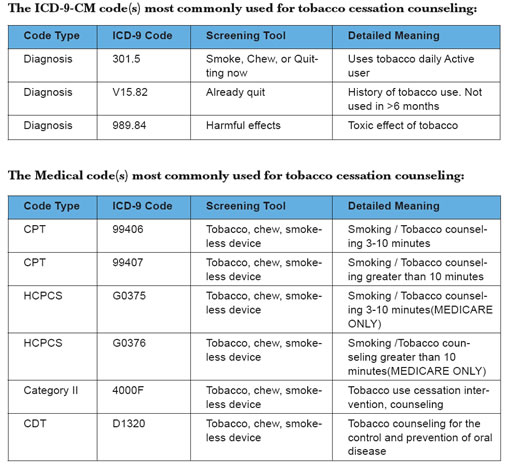According to the Office on Smoking and Health (OSH), a current smoker is defined as any person(s) who reported smoking at least 100 cigarettes in their life and who currently smokes every day or on some days.
Consider this: Almost all smokers start while they're young. In most instances, the first use of tobacco takes place before high school graduation. A survey conducted by the U.S. Centers for Disease Control and Prevention (CDC) performed in 2009, found that nearly half of high school students had tried cigarette smoking at some point and more than 1 out of 4 high school students were current tobacco users. It has been shown that the younger you are when you begin smoking, the more likely you are to continue to be a smoker through adulthood; almost 90% of adults who are regular smokers started at or before age 19. Each and every day more than 4,000 kids under the age of 18 try their first cigarette and another 1,100 become daily smokers; because of this, we can estimate about one third of these kids will die prematurely.
It is clear that tobacco use is hurting our mothers, fathers, sisters, brothers, nieces, nephews, and children, causing approximately 419,000 deaths in the U.S. every year. Tobacco use has been linked with several diseases including cardiovascular disease, gastrointestinal disease, and cancers of the lung, head and neck, esophagus, pancreas, kidney, bladder and cervix. It further affects the health of non-smokers; passive cigarette smoke exposure causes an estimated 3,000 lung cancer deaths in non-smokers each year. Tobacco use by women who are pregnant causes morbidity associated with low birth weight, preterm deliveries, and approximately 1,700 deaths among infants each year. To further drive the point, smoking is also the most important risk factor in children passively inhaling tobacco; it increases incidence of asthma, lower respiratory tract infections, and middle ear effusions.
Tobacco cessation continues to be the single most important preventable cause of premature death in the United States today. Seventy percent of smokers visit a physician at least once a year, thus providing physicians many opportunities to provide the necessary tools for their patients to quit smoking. Not only is it cost effective to provide a patient with tobacco counseling during an office visit, it has been proven to improve cessation rates.
There is nothing worse than watching a patient suffer through the stages of Chronic Obstructive Pulmonary Disease (COPD) or lung cancer. Unfortunately, those addicted to tobacco products are not always given the support and counseling that they so desperately need. As a medical provider, it is your obligation to assist your patients with the struggle of kicking the habit; in addition, you may receive payment for this assistance through tobacco cessation counseling, up to four times per year.
How to initiate Tobacco Cessation Counseling in your office
When encountering a tobacco user, you must spend at least 3 minutes discussing his/her smoking issue, and providing advice on how to stop. Key elements that should be documented are the type and quantity of tobacco used, time spent with the patient on counseling, and your therapeutic recommendations. It would be ideal to have a different information kit on hand for each quarterly visit. You may order a variety of pamphlets and planners usually at no cost to the office from the American Red Cross, some pharmaceutical representatives, and companies that sell tobacco cessation products.
Tobacco cessation counseling is not only good for the patient but good for the practice as well. Today, every doctor can offer tobacco cessation counseling to existing patients, boosting revenue; additionally, it is an excellent opportunity to advertise and attract new patients.
According to the American College of Preventive Medicine, clinicians should provide tobacco use cessation counseling at every clinical encounter. The counseling should be medically oriented, clear, strong, and personal. Other associations such as the American Dental Association, American Heart Association, American Lung Association, American Medical Association, and the National Cancer Institute strongly recommend routine tobacco use cessation counseling.
Who pays for this and how is this coded and billed
Medicare, Medicaid, and other Private Party Payers will pay for counseling to help your patient quit using tobacco. It is covered even if you do not have any problems related to tobacco use. This new benefit started in 2011, and in most instances, your patient will pay nothing for this counseling because it is covered as preventive service.
Medicare patients having health problems due to tobacco are allowed up to 8 face-to-face visits in a 12-month period. However, they will have to pay 20% of the Medicare-allowed amount and the Part B deductible for their counseling. Please check with private carriers for the exact benefit allowed, as it is different for each plan.

Note: All providers should keep appropriate documentation for each encounter in the patient's medical record to adequately demonstrate coverage.
Reference List:
Acpm.org (2011). Quitting Smoking. Retrieved from:
http://www.acpm.org/tobpol.htm
Cancer.org (2010). Medicare Coverage for Cancer Prevention and Early Detection.
Retrieved from:
http://www.cancer.org/Healthy/FindCancerEarly/CancerScreeningGuidelines/
medicare-coverage-for-cancer-prevention-and-early-detection
MLN Matters (2005). MLN Matters MM3834. Smoking and Tobacco Use Cessation
Counseling. Retrieved from:
http://www.cms.gov/MLNMattersArticles/downloads/MM3834.pdf
US Public Health Service (2011). Special Performance Measure Tobacco. Retrieved from:
http://www.hab.hrsa.gov/special/performance/measureTobacco.htm#a
Mindi Rothans, CDC-S, CPC, is the Founder, Owner and Lead Consultant for Rothans & Associates, and the Director of Education for the American Dental Coders Association. www.adcaonline.org

